Asplenium Venus Bird’s Nest Fern
Original price was: ₹1,299.00.₹449.00Current price is: ₹449.00.
9 in stock
Size: Single Plant | 4″ Pot Included
The Asplenium Venus Bird’s Nest Fern (Asplenium nidus ‘Venus’) is a popular houseplant known for its striking, wavy fronds and relatively easy care.
Here’s a guide to help you keep Asplenium Venus Bird’s Nest Fern thriving:
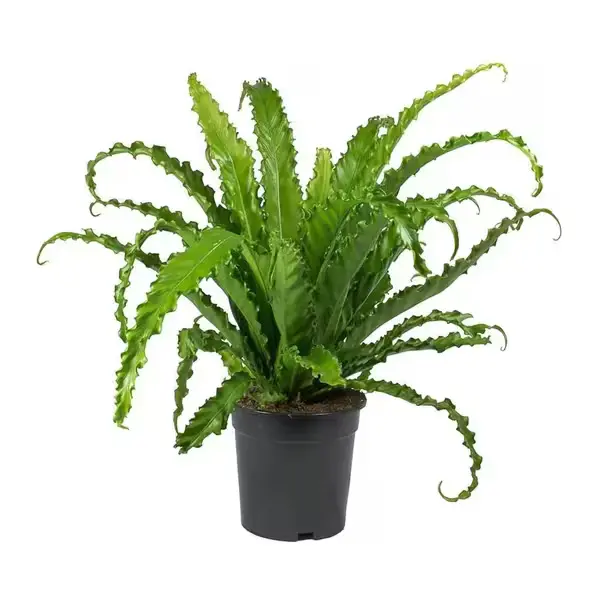
1. Light:
- Bright, Indirect Light is Best: Bird’s Nest Ferns prefer medium to bright indirect light. Think of an east or north-facing window where it gets good light but no direct sun.
- Avoid Direct Sunlight: Harsh, direct sun can scorch and burn the delicate fronds, leading to pale or yellowing leaves.
- Tolerates Lower Light: While it thrives in brighter indirect light, it can also tolerate low indirect light conditions.
2. Watering:
- Keep Soil Consistently Moist, Not Soggy: This fern likes its soil to be consistently moist but well-draining. Avoid letting it sit in soggy soil, as this can lead to root rot.
- Water When Top Inch is Dry: Check the top inch or two of the soil. When it feels dry to the touch, it’s time to water.
- Water Around the Edges: Crucially, do not water directly into the center “nest” or rosette of the plant. Water can get trapped there, leading to mold growth and rot. Instead, water the soil around the base of the plant.
- Drainage is Key: Ensure your pot has ample drainage holes to prevent waterlogging. Discard any excess water that collects in the saucer.
- Adjust for Environment: You’ll likely water more often in brighter light and less often in lower light.
3. Humidity:
- Loves High Humidity: As a tropical fern, the Asplenium ‘Venus’ thrives in high humidity (ideally 50-80%).
- Ways to Increase Humidity:
- Place in a Humid Room: Bathrooms or kitchens are often good locations due to naturally higher humidity.
- Use a Humidifier: Running a humidifier nearby is an excellent way to maintain consistent humidity.
- Pebble Tray: Place the pot on a tray filled with pebbles and water. As the water evaporates, it increases the humidity around the plant.
- Group Plants: Grouping plants together can create a mini-microclimate with higher humidity through collective transpiration.
- Mist Occasionally: While misting can provide a temporary boost, it’s not a long-term solution for humidity. If you do mist, avoid letting water sit in the crown.
- Signs of Low Humidity: Brown, crispy leaf tips or edges can indicate a lack of humidity.
4. Temperature:
- Average Home Temperatures: This fern is comfortable in average home temperatures, ideally between 60-80°F (15-27°C).
- Avoid Drafts: Protect your fern from cold drafts, air conditioning vents, and heating vents, as sudden temperature changes can stress the plant. It can tolerate temperatures down to 50°F (10°C) but prolonged exposure to colder temperatures can be harmful.
5. Soil:
- Well-Draining and Rich: Use a well-draining, loose, and rich potting mix. A peat-based potting mix with good drainage is ideal. A mix of two parts peat and one part perlite is a good option.

6. Fertilizer:
- During Growing Season: During its active growing season (spring through early fall), you can feed your fern about once a month with a balanced liquid fertilizer diluted to half strength.
- Apply to Soil: Apply the fertilizer to the soil, avoiding direct contact with the fronds, as this can cause burns.
- Reduce in Winter: Stop fertilizing in the fall and resume in the spring when growth picks up.
7. Repotting:
- Infrequent Repotting: Bird’s Nest Ferns have relatively small root systems and are slow growers, so they don’t need frequent repotting.
- When to Repot: Repot every 2-3 years, or when the plant becomes unstable in its pot due to its size, rather than because it’s root-bound. Spring is the best time to repot.
- Choose a Slightly Larger Pot: Select a container that’s large enough to keep your plant stable. Ceramic pots often work well to anchor the plant.
- Handle with Care: Be gentle with the roots and the delicate new fronds when repotting.
8. Common Problems:
- Pale Green/Dry Leaves: Often a sign of underwatering.
- Yellowing Lower Leaves/Wet Soil: Can indicate too much light or overwatering.
- Brown, Crispy Leaves: Usually due to low humidity or underwatering.
- Rot in the Crown: Caused by watering directly into the center of the plant.
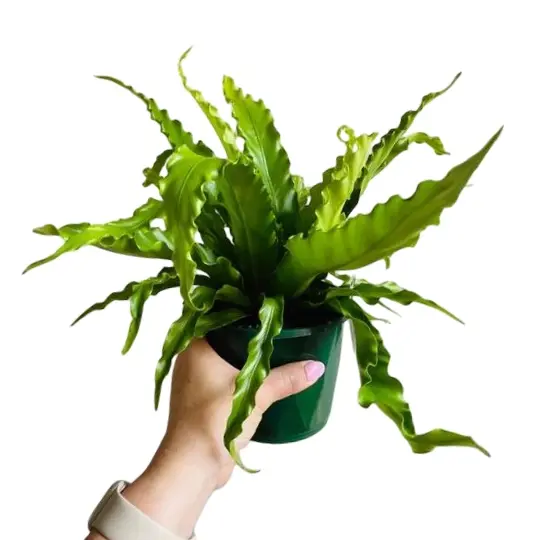
By providing consistent moisture, high humidity, appropriate lighting, and well-draining soil, your Asplenium ‘Venus’ Bird’s Nest Fern will thrive and add a beautiful tropical touch to your home.
Only logged in customers who have purchased this product may leave a review.


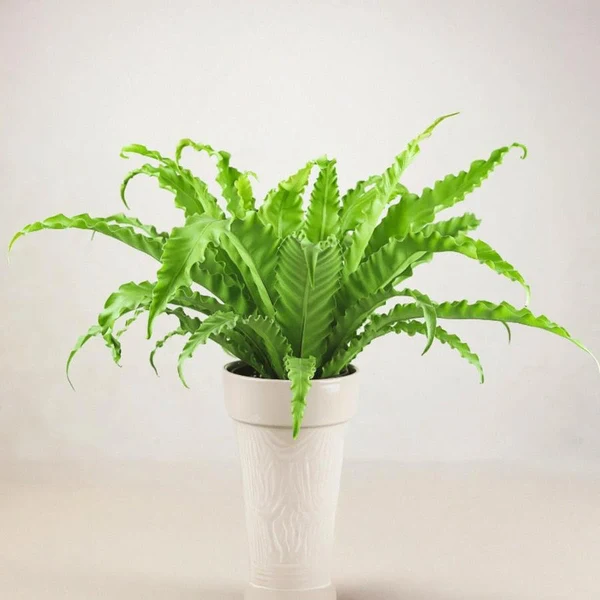
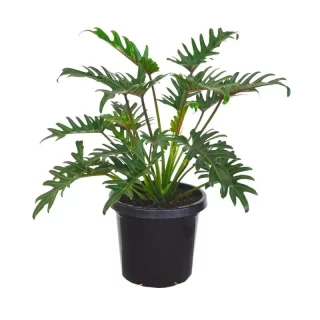
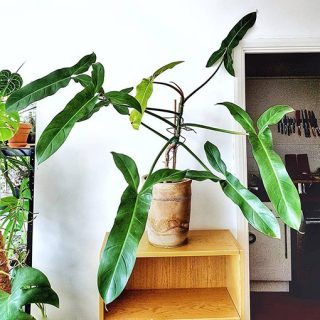
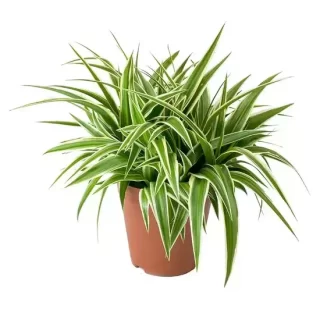
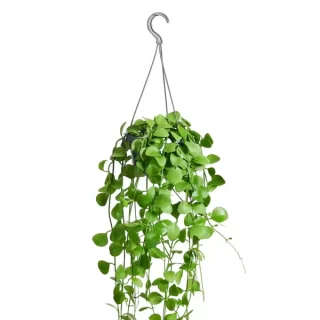
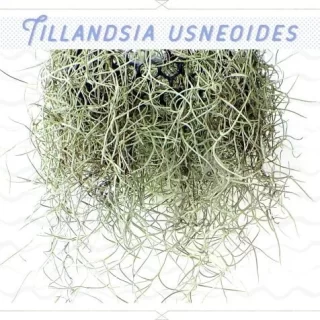
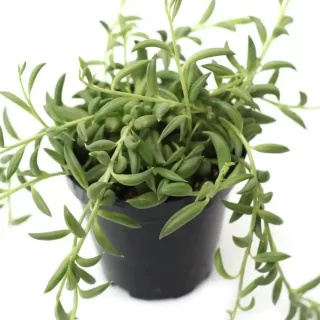
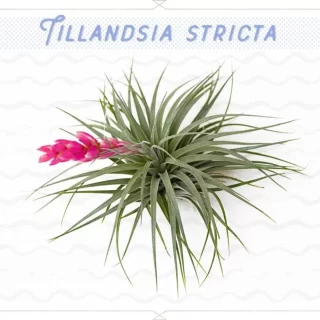
 If you need any assistance, I'm always here. Have you found what you were looking for?
If you need any assistance, I'm always here. Have you found what you were looking for?
Reviews
There are no reviews yet.